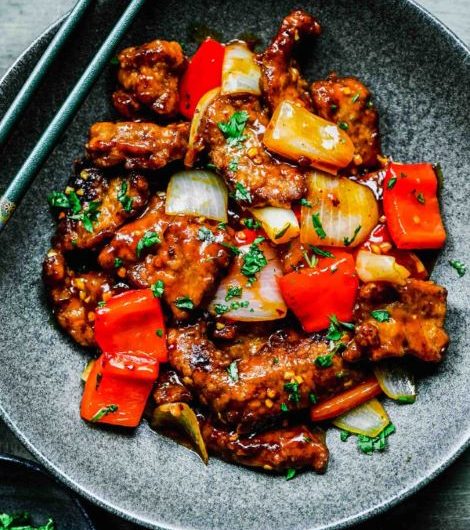Welcome to a delectable exploration into the heart of Chinese cuisine, where flavors dance on the palate and culinary traditions tell stories of centuries past. Today, we embark on a savory adventure centered around a dish that epitomizes the rich tapestry of Chinese flavors: Beijing Beef.
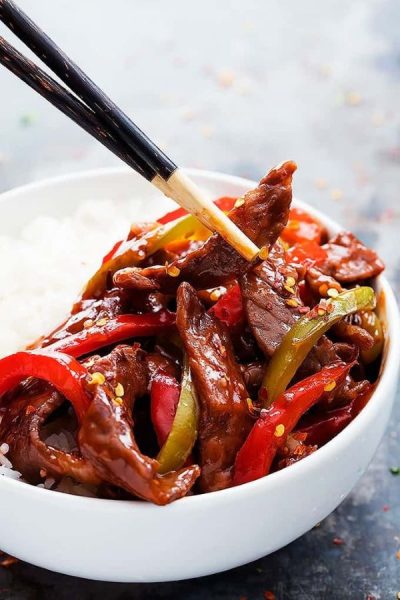
Beijing Beef: A Culinary Journey to the Heart of China
Beijing beef, a vibrant and flavorful dish originating from China’s capital city, is more than just a stir-fry. It’s a symphony of textures and tastes, a testament to the culinary ingenuity of the region.
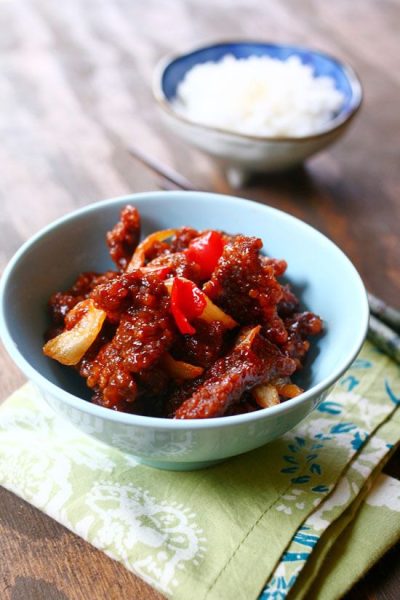
This delectable dish, often enjoyed with fluffy white rice, has captured the hearts (and taste buds) of people worldwide, finding its way not only onto restaurant menus but also into home kitchens.
This blog post is your one-stop guide to Beijing beef, delving into its history, exploring variations, and finally, equipping you with a delicious and easy-to-follow recipe to recreate this culinary masterpiece in your own home.
Origins and Evolution
The origins of Beijing Beef can be traced back to the imperial kitchens of ancient China, where skilled chefs catered to the discerning tastes of emperors and nobility. Drawing inspiration from regional ingredients and culinary techniques, these culinary artisans crafted dishes that transcended mere sustenance, offering a symphony of flavors and textures.
Over the centuries, Beijing Beef evolved alongside China’s shifting cultural landscape, incorporating influences from various dynasties and culinary traditions. From the aromatic spices of the Silk Road to the delicate flavors of Cantonese cuisine, a unique dish emerged, blending diverse ingredients and cooking styles into a harmonious whole
Unveiling the Flavors: A Deep Dive into Beijing Sauce
The heart and soul of Beijing beef lies in its namesake sauce. This unique concoction, often referred to as “Tian Mian Jiang” , is a sweet and savory bean paste made from fermented soybeans, flour, and water. It forms the base of the sauce, offering a complex depth of flavor with hints of sweetness, umami, and a touch of funk.

Beyond the Tian Mian Jiang, other key ingredients in the sauce typically include:
- Soy sauce: Adds a salty depth and umami richness.
- Hoisin sauce: Offers a touch of sweetness and a subtle smokiness.
- Oyster sauce: Enhances the savory profile and adds a hint of richness.
- Sugar: Balances the savory flavors and adds a touch of sweetness.
- Rice vinegar or Chinese black vinegar: Provides acidity and complexity.
- Chili flakes or hot sauce (optional): Adds a delightful kick of heat.
These ingredients are combined and simmered, allowing the flavors to meld and mature, resulting in a robust sauce that coats the tender beef and vegetables perfectly.
Cultural Significance
Beyond its culinary prowess, Beijing Beef holds a special place in Chinese culture, serving as a symbol of prosperity, celebration, and community. Traditionally served during festive occasions and family gatherings, Beijing Beef embodies the spirit of togetherness and shared joy.
In modern times, Beijing Beef has transcended cultural boundaries, captivating the hearts and taste buds of food enthusiasts worldwide. Whether enjoyed in a bustling street market in Beijing or savored at a trendy restaurant in New York City, continues to inspire awe and delight, bridging the gap between cultures and bringing people together through the universal language of food.
Variations on a Theme: Exploring Different Takes on Beijing Beef
While the core elements of Beijing beef remain constant, regional variations and personal preferences have led to the emergence of diverse interpretations of this beloved dish. Here are a few interesting variations to explore:
- Spicy Beijing Beef: This version incorporates chili peppers or chili oil, adding a fiery kick to the dish.
- Szechuan Beijing Beef: This variation features the distinctive flavors of Sichuan cuisine, including Sichuan peppercorns and fermented black beans, offering a unique numbing sensation and depth of flavor.
- Vegetarian Beijing Beef: This meat-free rendition utilizes tofu or other plant-based proteins, replicating the satisfying texture and flavor profile of the original.
No matter your preference, there’s likely a variation out there waiting to be discovered and enjoyed.
Beijing Beef Recipe
Course: Uncategorized4
servings15
minutes20
minutesIngredients
For the marinade:
1 pound flank steak, thinly sliced against the grain
1 tablespoon soy sauce
1 tablespoon Shaoxing wine (or dry sherry)
1/2 teaspoon cornstarch
1 egg white
For the stir-fry:
2 tablespoons vegetable oil
1 red bell pepper, thinly sliced
1 green bell pepper, thinly sliced
1/2 onion, thinly sliced
2 cloves garlic, minced
1/2 cup chicken broth
1/4 cup Beijing sauce (Tian Mian Jiang)
2 tablespoons soy sauce
1 tablespoon oyster sauce
1 tablespoon hoisin sauce
1 tablespoon brown sugar
1 tablespoon rice vinegar
1/2 teaspoon cornstarch mixed with 2 tablespoons water (cornstarch slurry)
Salt and freshly ground black pepper to taste
Chopped green onions, for garnish (optional)
Directions
- Marinate the Beef: In a medium bowl, combine the sliced flank steak, soy sauce, Shaoxing wine, cornstarch, and egg white.

- Toss well to coat the beef evenly. Marinate for at least 30 minutes, or up to an hour, for deeper flavor.

- Cook the Beef: Heat the vegetable oil in a large wok or skillet over medium-high heat. Once hot, add the marinated beef and cook, stirring constantly, until browned and cooked through, about 2-3 minutes. Remove the cooked beef from the pan using a slotted spoon and set aside on a plate.

- Prepare the Vegetables: While the beef marinates, thinly slice the red and green bell peppers, onion, and mince the garlic.
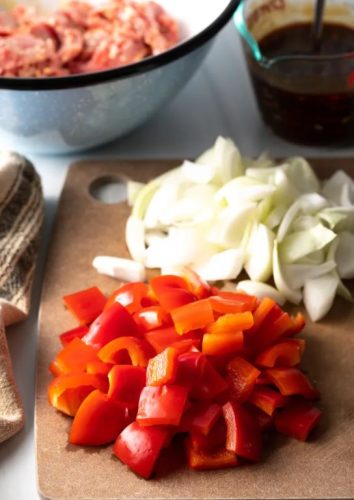
- Stir-fry the Vegetables: Add the sliced bell peppers and onion to the wok and cook, stirring occasionally, for 2-3 minutes, or until slightly softened. Add the minced garlic and cook for another 30 seconds, until fragrant.
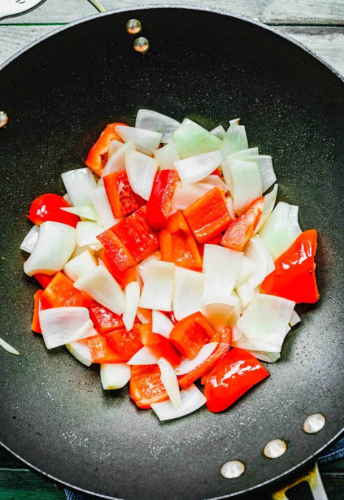
- Create the Sauce: Pour in the chicken broth, Beijing sauce, soy sauce, oyster sauce, hoisin sauce, brown sugar, and rice vinegar. Stir to combine and bring the sauce to a simmer.
- Thicken the Sauce: Once simmering, slowly whisk in the cornstarch slurry while stirring continuously. Cook for 1-2 minutes, or until the sauce thickens slightly.

- Combine and Serve: Return the cooked beef to the wok and toss gently to coat it in the sauce. Season with salt and freshly ground black pepper to taste.

- Garnish and Enjoy: Transfer the Beijing beef to a serving platter and garnish with chopped green onions (optional). Serve immediately over steamed white rice, and prepare to be transported to the heart of culinary China with every flavorful bite!
Notes
- Ensure the beef is thinly sliced against the grain for optimal tenderness.
- Adjust the amount of chili flakes or hot sauce in the sauce according to your desired level of spiciness.
- Leftovers can be stored in an airtight container in the refrigerator for up to 2 days. Reheat gently in a pan over medium heat until warmed through.
- With this recipe and a bit of culinary passion, you can now recreate the magic of Beijing beef in your own kitchen, savoring the vibrant flavors and textures of this iconic dish.
Pairing Suggestions for Beijing Beef
To elevate your experience, consider pairing it with traditional accompaniments such as steamed rice or stir-fried vegetables. The subtle sweetness of jasmine rice complements the savory richness of the beef, while crisp, vibrant vegetables add a refreshing contrast to the dish.
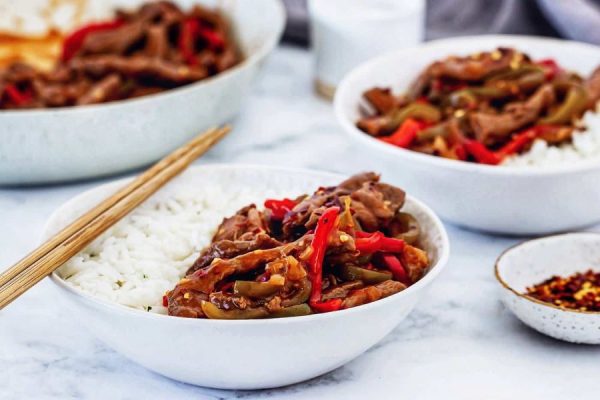
For those seeking a bolder pairing, consider serving Beijing Beef alongside a glass of robust red wine or a refreshing lychee martini. The complex flavors of the wine or cocktail enhance the depth and complexity of the dish, creating a harmonious union of taste and texture.
Conclusion
As we bring our culinary journey to a close, we invite you to savor the flavors and embrace the traditions that make Beijing Beef a true culinary masterpiece. From its origins in the imperial kitchens of ancient China to its worldwide popularity, this dish embodies the spirit of innovation, tradition, and cultural exchange.
So the next time you find yourself craving a taste of the exotic, venture into the world of Beijing Beef and discover a culinary experience like no other. With each bite, you’ll uncover a symphony of flavors and a rich tapestry of tradition, inviting you to embark on a gastronomic adventure that transcends time and borders.
Come, join us on this savory journey, and experience the irresistible charm of culinary masterpiece for yourself.

